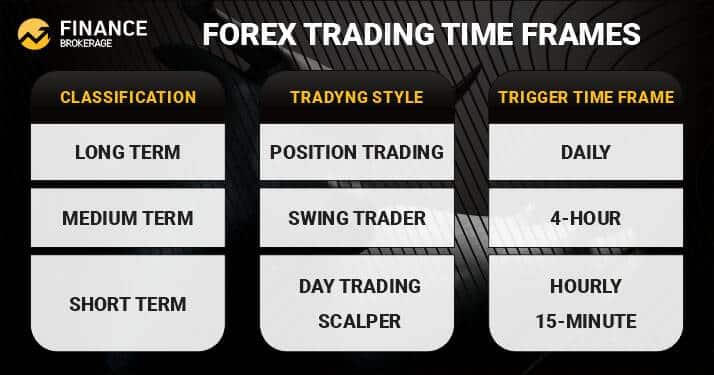
Trading in FX – Multiple Time Frames
Most technical traders (whether beginners or professionals) in the foreign exchange market came across various time frame analyses in the market education. However, these developing strategies and reading charts are often considered the first levels of study forgotten quickly when a trader seeks a turn in the market.
In concentrating on a day trading, momentum, or breakout, including event risk, among other styles, many market members lose track of the more significant trend while missing precise support and resistance levels. They sometimes overlook the high chance of entry and stop levels. This article will explain the idea of multiple time frame analysis, choosing the various periods and putting it all together.
Multiple Time-Frame Analysis: what is it
It involves monitoring the same currency pair in time compressions or different frequencies. There are universal guidelines that most practitioners will support, while there is no actual limit on the number of frequencies monitored.
Typically, using three different terms gives enough information on the market. Using fewer than three might result in significant data loss while using more than three naturally produces excessive analysis. When taking the three-time frequencies, a simple approach is to follow a rule of four. It means that a medium-term period determined should represent a standard period. From there, they should choose a shorter-term time frame that could be one-fifth of the intermediate period. The long-term time frame could be five times higher than the intermediate one.
It is essential to choose the right time frame when selecting the range of these periods. A long-term trader who keeps positions for several months will find a little use for several minutes combination. In the meantime, a day trader who keeps positions for just several hours would find a slight advantage in other arrangements such as daily, weekly and monthly. We do not say that the long-term trader can not benefit from the short-term trade by presenting this information.

Long-Term Time Frame
This method of studying charts is considered the best policy, to begin with, the long-term time frame. Besides, it allows you to work with more significant granular frequencies.
We should also mention that the execution of Positions on this wide-angled chart is unnecessary. However, we should remember that traders should keep taking trades in the same direction as the trend of this frequency is heading. We do not mean that traders can not take trades against the more significant trend. However, those will have a lower chance of success while the profit target should be less than heading toward the overall trend.
In the currency markets, some trends such as fundamentals significantly impact direction when using the long-term time frame daily, weekly, or monthly. Therefore, a trader has to control the significant economic trends when developing the general trend in the long-term time frame. When the primary financial concern has an account deficit, business investment, consumer spending, or any other influences, traders should monitor these developments to understand the direction in price action. At the same time, these dynamics change, so traders should check them occasionally.
Another consideration is the interest rate which partly reflects an economy’s strength. The interest rate is an essential component in terms of pricing exchange rates. In most cases, capital will move toward the currency with the more expensive speed in a pair, which equals greater returns on investments.
Medium-Term Time Frame
Smaller moves in the broader trend grow in visibility after increasing the granularity to the intermediate time frame. This action is considered the most accomplished in three frequencies. As we said before, the required holding period for trade should set this anchor in the time frame range. This level should be the most popular in traders who follow the chart after planning a trade.
Short-Term Time Frame
Finally, we could say that traders should execute trades in the short-term time frame. As the more minor fluctuations in price-performance become more apparent, a trader can better pick a charming entry for a position.
Another point for this period is that fundamentals heavily influence price action in charts, although slightly different from the higher time frame. Fundamental trends are not perceptible when charts are below a three-hour frequency. Alternatively, the short-term time frame will react to extended volatility.
The Bottom Line
When all time frames unite to evaluate a currency pair, a trader can quickly improve the chances of success, despite the other rules applied for a strategy. Executing the top-down analysis supports trading with the more significant trend. This procedure lowers risk, and the price action will finally continue on the longer trend.
Applying multiple time-frame analyses can increase the chances of making a successful trade. Unfortunately, numerous traders neglect the value of this method once they find a functional niche. As discussed in this article, it might be relevant for many amateur traders to revise this process because it is a simple method to guarantee that a position benefits from the trend.
-
Support
-
Platform
-
Spread
-
Trading Instrument




